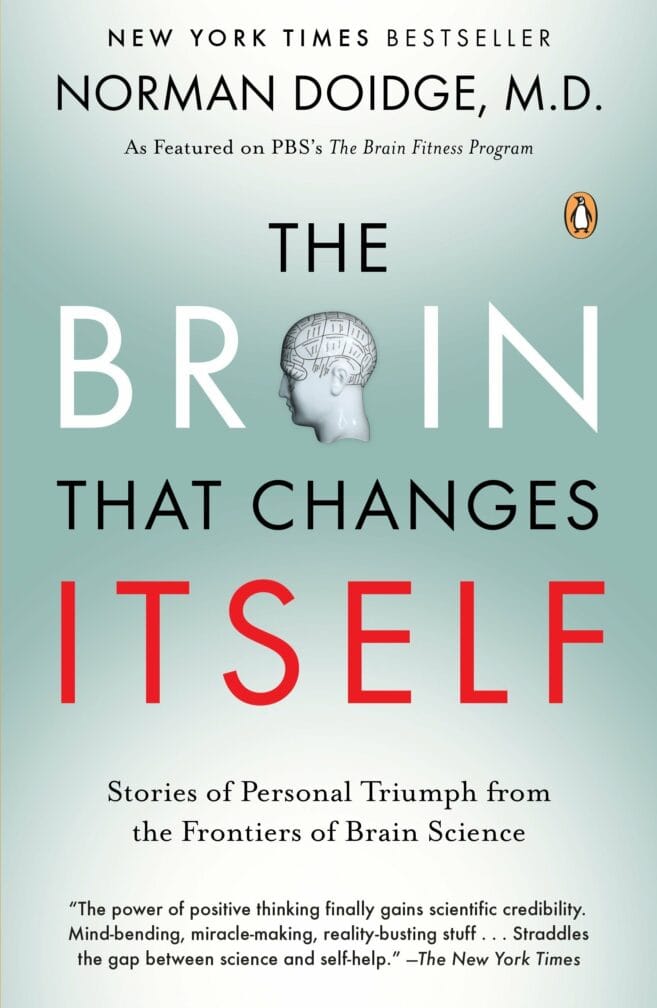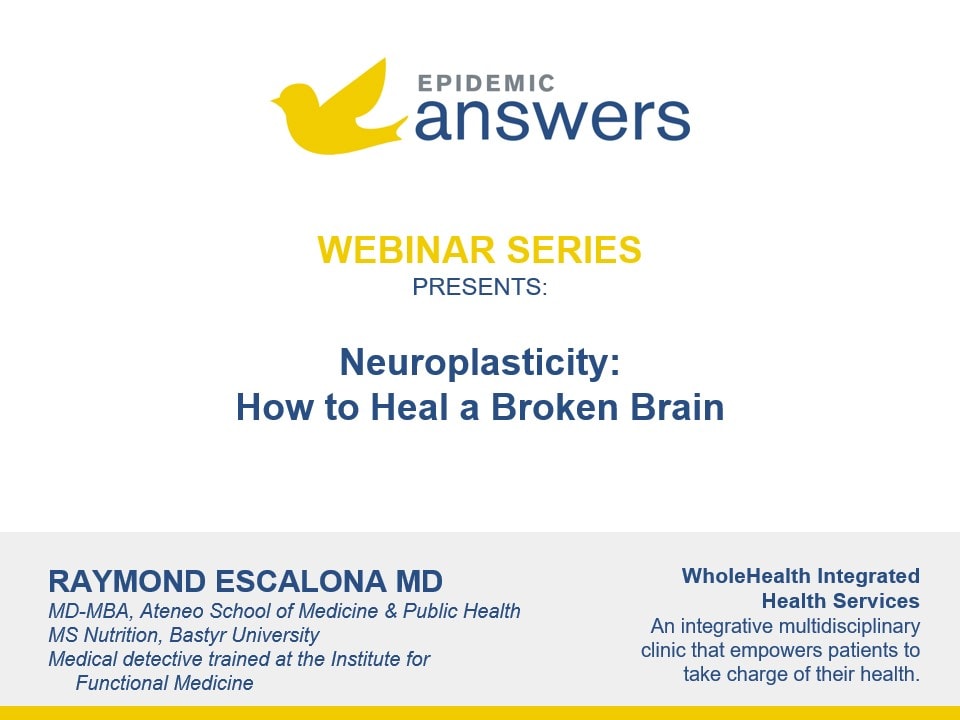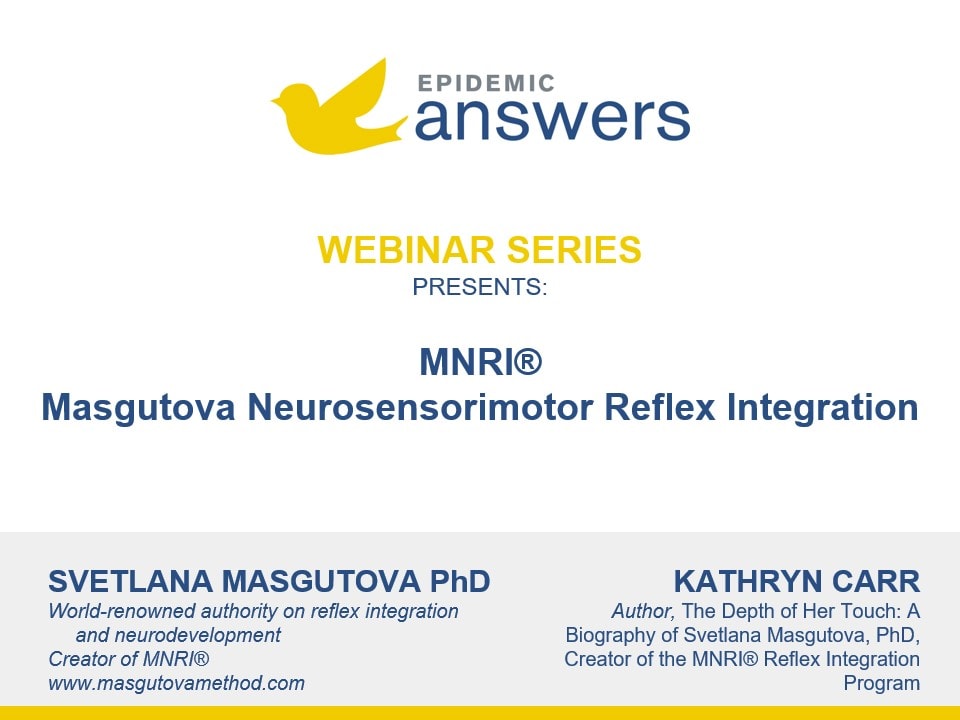The History of Neuroplasticity
The Brain That Changes Itself is a fascinating history of the concept of neuroplasticity and the researchers and clinicians who championed it.
The book begins with an introduction to the work of Paul Bach-Y-Rita, an influential pioneer in the understanding of neuroplasticity. This concept means that the brain can change in structure or function in response to experience. Bach-Y-Rita discovered that if one part of the brain is damaged such as from a stroke or Traumatic Brain Injury, another part can sometimes take over in what’s known as “sensory substitution.” This view is in contrast to an older concept known as localization, which theorized that certain parts of the brain have a fixed, unchangeable function.
The Brain That Changes Itself continues the history of neuroplasticity by next focusing on the works of Barbara Arrowsmith, who had severe learning disabilities that she overcame with cognitive exercises she developed for herself to overcome these difficulties. These were the basis of the Arrowsmith School and programs that she founded.
Doidge then introduces Michael Merzenich, the “driving force behind scores of neuroplastic innovations and practical innovations” such as Fast ForWord, a series of plasticity-based computer programs. Merzenich’s research theorized that “neurons in brain amaps develop strong connections to one another when they are activated at the same moment in time, a concept usually described as “neurons that fire together wire together.” This saying has now been updated to “neurons that fire apart wire apart” and “neurons out of sync fail to link.”
Edward Taub is the next researcher in the book who is relevant to our readers. Taub developed constraint-induced (CI) movement therapy, which has shown promise for those with movement disorders brought on by conditions such as strokes, Parkinson’s, cerebral palsy and multiple sclerosis. Taub theorizes that those with brain damage from these conditions are suffering from learned nonuse, which masks the ability to recover. CI, his contribution to neuroplasticity, constrains the use of the good limb to force the affected one to move.
Jeffrey M. Schwartz is the next researcher described by Doidge. Schwartz’s work entailed the use of PET (Positron Emission Tomography) scans to demonstrate that talk therapy can change the brain. He developed a treatment for “OCD brain lock” that includes exposure and response prevention behavioral therapy as well as doing a new activity for 15-30 minutes when a compulsion strikes.
Doidge also writes about other fascinating subjects such as addiction, pain from phantom limbs and Transcranial Magnetic Stimulation (TMS). In addition, he peppers tantalizing anecdotes from people that have seen miraculous improvements in their brain’s function as well as other researchers helping to make these miracles happen.
This book is an inspiring read for parents of children with any of the following conditions:
- Memory loss
- Other neurological conditions
- PANS/PANDAS
- Sensory Processing Disorder
- Speech and language issues
- Strabismus and amblyopia
- Strokes
Norman Doidge, MD, FRCP (C) is a psychiatrist, psychoanalyst, researcher, author, essayist and poet.
For thirty years he was on faculty at the University of Toronto’s Department of Psychiatry, and Research Faculty at Columbia University’s Center for Psychoanalytic Training and Research, Department of Psychiatry, Columbia University, in New York.
Currently, he is a Training and Supervising Analyst (a trainer of psychoanalysts) at the Toronto Institute of Psychoanalysis. He is the author of two New York Times Bestsellers. He lives in Toronto. You can find out more about him and his work at https://normandoidge.com/

Still Looking for Answers?
Visit the Epidemic Answers Practitioner Directory to find a practitioner near you.
Join us inside our online membership community for parents, Healing Together, where you’ll find even more healing resources, expert guidance, and a community to support you every step of your child’s healing journey.
Sources & References
Akhmatova, N.K., et al. Influence of MNRI on the Immune Status of Children with Down Syndrome. Journal of Clinical & Cellular Immunology. 8 (2017): 1-8.
American Academy of Pediatrics. Biofeedback now a “Level 1 — Best Support” Intervention for Attention & Hyperactivity Behaviors. Evidence-based Child and Adolescent Psycho-social Interventions. 2012 Oct 5.
Arns, M., et al. Efficacy of neurofeedback treatment in ADHD: the effects on inattention, impulsivity and hyperactivity: a meta-analysis. Clinical EEG and Neuroscience, 40(3), 180-189.
Bach-Y-Rita, P. Brain plasticity as a basis for recovery of function in humans. Neuropsychologia. 1990;28(6):547-54.
Bach-Y-Rita, P. Is it possible to restore function with two percent surviving neural tissue? J Integr Neurosci. 2004 Mar;3(1):3-6.
Bach-Y-Rita, P. Theoretical and practical considerations in the restoration of function after stroke. Top Stroke Rehabil. 2001 Autumn;8(3):1-15.
Barnhill, E. Neural connectivity, music, and movement: a response to Pat Amos. Front Integr Neurosci. 2013 Apr 24;7:29.
Bartscherer, et al. Interactive metronome training for a 9-year-old boy with attention and motor coordination difficulties. Physiother Theory Pract. Oct-Dec 2005;21(4):257-69.
Bell, C., et al. The Effect of the MNRI Method on Neurotransmitter Biomarkers of Individuals with Neurodevelopmental Disorders. Neuroscience and Medicine. 2019.
Beauregard, M., et al. Functional magnetic resonance imaging investigation of the effects of neurofeedback training on neural bases of selective attention and response inhibition in children with attention-deficit/hyperactivity disorder. Applied Psychophysiology and Biofeedback, 2006 Mar;31(1):3-20.
Chekhchoukh, A., et al. Influence of sparkle and saccades on tongue electro-stimulation-based vision substitution of 2D vectors. Acta Biotheor. 2012 Jun;60(1-2):41-53.
Chiu, H.J., et al. Surface electroencephalographic neurofeedback improves sustained attention in ADHD: a meta-analysis of randomized controlled trials. Child Adolesc Psychiatry Ment Health. 2022 Dec 19;16(1):104.
Cho, H., et al. Effects of Action Observation Training with Auditory Stimulation on Static and Dynamic Balance in Chronic Stroke Patients. J Stroke Cerebrovasc Dis. 2020 May;29(5):104775.
Contestabile, A., et al. Lithium rescues synaptic plasticity and memory in Down syndrome mice. J Clin Invest. 2013 Jan;123(1):348-61.
Cosper, S.M., et al. Interactive Metronome training in children with attention deficit and developmental coordination disorders. Int J Rehabil Res. 2009 Dec;32(4):331-6.
Danilov, Y.P., et al. Efficacy of electrotactile vestibular substitution in patients with peripheral and central vestibular loss. J Vestib Res. 2007;17(2-3):119-30.
Deiss, T., et al. Physiological Markers and Reflex Pattern Progression in Individuals with Neurodevelopmental Deficits Utilizing the MNRI Method. Neuroscience and Medicine. 2019.
Deroy, O., et al. Reading the World through the Skin and Ears: A New Perspective on Sensory Substitution. Front Psychol. 2012 Nov 7:3:457.
Dudek, E., et al. The efficacy of real-time functional magnetic resonance imaging neurofeedback for psychiatric illness: A meta-analysis of brain and behavioral outcomes.
Neurosci Biobehav Rev. 2021 Feb;121:291-306.
Duric, N.S., et al. Neurofeedback for the treatment of children and adolescents with ADHD: A randomized and controlled clinical trial using parental reports. BMC Psychiatry, 2012 Aug 10;12:107.
Gani, C., et al. Long term effects after feedback of slow cortical potentials and of theta-beta-amplitudes in children with attention-deficit/hyperactivity disorder. International Journal of Bioelectromagnetism, 2008; 10, 4, 209 -232.
Gevensleben, H., et al. (2009). Is neurofeedback an efficacious treatment for ADHD?: A randomized controlled clinical trial. Journal of Child Psychology and Psychiatry, 2009 Jul;50(7):780-9.
Grigg, T.M., et al. Retained primitive reflexes: Perceptions of parents who have used Rhythmic Movement Training with their children. J Child Health Care. 2018 Sep;22(3):406-418.
Grzywniak, C. Integration exercise programme for children with learning difficulties who have preserved vestigial primitive reflexes. Acta Neuropsychologica. 2017;15(3).
Hardy, M.W., et al. Rhythm, movement, and autism: using rhythmic rehabilitation research as a model for autism. Front Integr Neurosci. 2013 Mar 28;7:19.
Herbert, J., et al. Crawling is associated with more flexible memory retrieval by 9-month-old infants. Dev Sci. 2007 Mar;10(2):183-9.
Hong, H.J., et al. Effect of Rhythmic Movement Program to Improve Walking Ability for Elderly Patients with Stroke. Indian Journal of Science and Technology. 2016 Jul;9(26).
Iverson, J.M. Developing language in a developing body: the relationship between motor development and language development. J Child Lang. 2010 Mar;37(2):229-61.
Jordan-Black, J. The effects of the Primary Movement programme on the academic performance of children attending ordinary primary school. Journal of Research in Special Educational Needs. 2005 Nov;5(3):101 – 111.
Kadivar, Z., et al. Effect of step training and rhythmic auditory stimulation on functional performance in Parkinson patients. Neurorehabil Neural Repair. 2011 Sep;25(7):626-35.
Jarusiewicz, B. Efficacy of Neurofeedback for Children in the Autistic Spectrum: A Pilot Study. Journal of Neurotherapy. 2002;6(4).
Ladányi, K. et al. Is atypical rhythm a risk factor for developmental speech and language disorders? Wiley Interdiscip Rev Cogn Sci. 2020 Sep;11(5):e1528.
Lakatos, P., et al. A New Unifying Account of the Roles of Neuronal Entrainment. Curr Biol. 2019 Sep 23;29(18):R890-R905.
Leins, U., et al. Neurofeedback for children with ADHD: A comparison of SCP and Theta/Beta protocols. Appl Psychophysiol Biofeedback, 2007 Jun;32(2):73-88.
Levesque, J., et al. Effect of neurofeedback training on the neural substrates of selective attention in children with attention deficit/hyperactivity disorder: A functional magnetic resonance imaging study. Neuroscience Letters, 2006 Feb 20;394(3):216-21.
Linhartová, P., et al. fMRI neurofeedback in emotion regulation: A literature review.
Neuroimage. 2019 Jun;193:75-92.
Masgutova, S., et al. Effect of the MNRI Reflex Neuromodulation on the QEEG and Neurotransmitters of Children Diagnosed with Cerebral Palsy. 2020.
Masgutova, S., et al. Effects of MNRI Visual Reflex Neuro-Training on Visual and Academic Skills of Children with Autism. International Journal of School and Cognitive Psychology 05 (2018): 1-15.
Masgutova, S. Post-Trauma Recovery in Children of Newtown, CT using MNRI Reflex Integration. Journal of
Traumatic Stress Disorders & Treatment. 5(5) 2017.
Masgutova, S., et al. Reflex Profile of Children with Down Syndrome Improvement of Neurosensorimotor Development Using the MNRI® Reflex Integration Program. International Journal of Neurorehabilitation. 3 (2016): 1-9.
Masgutova, S., et al. Progress with Neurosensorimotor Reflex Integration for Children with Autism Spectrum Disorder. 2016.
Masgutova, S. Reflex Integration Disorder as a New Treatment Paradigm for Children with Autism. 2015.
McWhirter, K., et al. The association between learning disorders, motor function, and primitive reflexes in pre-school children: A systematic review. J Child Health Care. 2022 Jul 13;13674935221114187.
Melillo, R., et al. Persistent Childhood Primitive Reflex Reduction Effects on Cognitive, Sensorimotor, and Academic Performance in ADHD. Front Public Health. 2020 Nov 17;8:431835.
Mohamed, M.A., et al. Sensory integration versus Masgutova neuro-sensorimotor reflex integration program on controlling primitive reflexes and gross motor abilities in children with diplegic cerebral palsy. Physiother Res Int. 2023 Jun 29;e2030.
Monastra, V.J., et al. The effects of stimulant therapy, EEG biofeedback, and parenting style on the primary symptoms of attention-deficit/hyperactivity disorder. Applied Psychophysiology and Biofeedback, 2002 Dec;27(4):231-49.
Monastra, V.J., et al. Electroencephalographic biofeedback (neurotherapy) as a treatment for attention deficit hyperactivity disorder: rationale and empirical foundation. Child Adolesc Psychiatric Clin N Am, 2005 Jan;14(1):55-82, vi.
Moreno-García, I., et al. Results of Neurofeedback in Treatment of Children with ADHD: A Systematic Review of Randomized Controlled Trials. Appl Psychophysiol Biofeedback. 2022 Sep;47(3):145-181.
Neurofeedback Collaborative Group, et al.
Neurofeedback for Attention-Deficit/Hyperactivity Disorder: 25-Month Follow-up of Double-Blind Randomized Controlled Trial.
J Am Acad Child Adolesc Psychiatry. 2022 Dec 8;S0890-8567(22)01971-2.
Nicholson, A.A., et al. The neurobiology of emotion regulation in posttraumatic stress disorder: Amygdala downregulation via real-time fMRI neurofeedback. Hum Brain Mapp. 2017 Jan;38(1):541-560.
Nowak, K., et al. Evaluation of the Therapeutic Effect of MNRI Reflex Neuromodulation on Children Diagnosed with Autism Based on Reflex Assessments, QEEG Analysis and ATEC Questionnaire. 2020.
Pilecki, W., et al. The impact of rehabilitation carried out using the Masgutova Neurosensorimotor Reflex Integration method in children with cerebral palsy on the results of brain stem auditory potential examinations. Adv Clin Exp Med. 2012 May-Jun;21(3):363-71.
Pindi, P., et al. Real-time fMRI neurofeedback as a new treatment for psychiatric disorders: A meta-analysis. Prog Neuropsychopharmacol Biol Psychiatry. 2022 Dec 20;119:110605.
Porges, S.W., et al. Reducing auditory hypersensitivities in autistic spectrum disorder: preliminary findings evaluating the listening project protocol. Front Pediatr. 2014 Aug 1;2:80.
Proulx, M.J., et al. Multisensory integration, sensory substitution and visual rehabilitation. Neurosci Biobehav Rev. 2014 Apr:41:1-2.
Roy, S., et al. Effectiveness of neurofeedback training, behaviour management including attention enhancement training and medication in children with attention-deficit/hyperactivity disorder – A comparative follow up study. Asian J Psychiatr. 2022 Oct;76:103133.
Sampaio, E., et al. Brain plasticity: ‘visual’ acuity of blind persons via the tongue. Brain Res. 2001 Jul 27;908(2):204-7.
Schoen, S., et al. A Pilot Study of Integrated Listening Systems for Children with Sensory Processing Problems. Journal of Occupational Therapy Schools & Early Intervention. July 2015. 8(3):256-276.
Shaffer, R.J., et al. Effect of interactive metronome training on children with ADHD. Am J Occup Ther. Mar-Apr 2001;55(2):155-62.
Slater, J.L., et al. Timing Deficits in ADHD: Insights From the Neuroscience of Musical Rhythm. Front Comput Neurosci. 2018 Jul 6;12:51.
Suh, J.H., et al. Effect of rhythmic auditory stimulation on gait and balance in hemiplegic stroke patients. NeuroRehabilitation. 2014;34(1):193-9.
Tatarinova, T.V., et al. The Impact of MNRI Therapy on the Levels of Neurotransmitters Associated with Inflammatory Processes. Int J Mol Sci. 2020 Feb 18;21(4):1358.
Teicher, M.H. Final White Paper: Effects of Brain Balance Exercises and Interactive Metronome on Children with Attention Deficit Hyperactivity Disorderare Similar to the Effects of Stimulant Medication. Harvard Medical School, Department of Psychiatry. 2020.
Warner, B.B. The contribution of the gut microbiome to neurodevelopment and neuropsychiatric disorders. Pediatr Res. 2019 Jan;85(2):216-224.
Resources
Books
Blomberg MD, Harald and Dempsey, Moira. Movements That Heal, Rhythmic Movement Training and Primitive Reflex Integration. Independenly published, 2011.
Brandes, Bonnie. The Symphony of Reflexes: Interventions for Human Development, Autism, ADHD, CP, and Other Neurological Disorders. CreateSpace Independent Publishing Platform, 2016.
Doidge, Norman. The Brain That Changes Itself: Stories of Personal Triumph from the Frontiers of Brain Science. Penguin Life, 2017.
Goddard Blythe, Sally. The Well Balanced Child: Movement and Early Learning. Hawthorn Press, 2005.
Goddard, Sally. Reflexes, Learning and Behavior, A Window Into the Child’s Mind. Fern Ridge Press, 2005.
Melillo, Robert. Disconnected Kids: The Groundbreaking Brain Balance Program for Children with Autism, ADHD, Dyslexia, and Other Neurological Disorders. Penguin Group, 2015.
Melillo, Robert. Reconnected Kids: Help Your Child Achieve Physical, Mental, and Emotional Balance. Penguin Group, 2015.
Websites
Balance Brain Achievement Centers
Brain Harmony research and case studies
Brain Harmony success stories by condition
Carnegie Learning (Fast ForWord)
Institute for Neuro-Physiological Psychology
My Child Will Thrive: Primitive Reflexes Cheat Sheet




